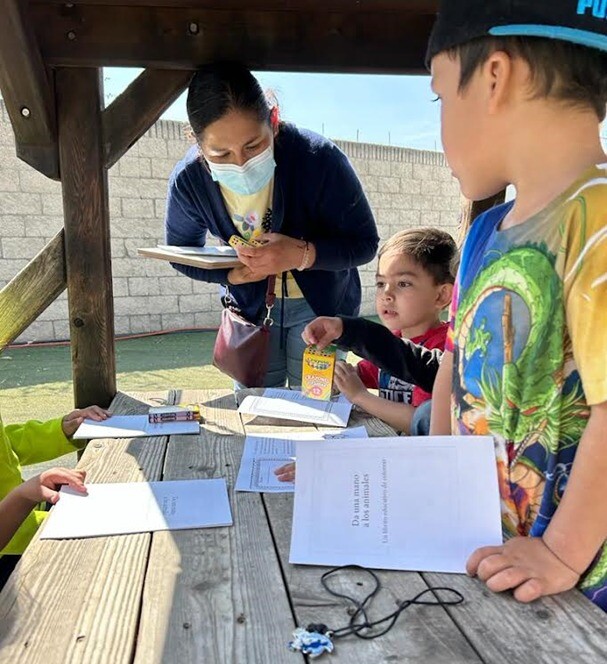This year most of the instruction in our Teaching Children Compassion for Animals program is taking place at our sterilization clinics, where families may spend several hours waiting for their dogs and cats to be sterilized. The waiting time provides an opportunity to teach young children how to care for their pets when the animals arrive home after surgery, and in general how to behave with their pets after the animals recover. We hope to improve children’s awareness that they and their pets share many characteristics and have many of the same needs.

For example, pets are frightened by sudden, loud noises, such as firecrackers or people shouting angrily at them. Dogs and cats may react aggressively if interrupted while they eat. They experience boredom and loneliness when kept isolated, and boredom may cause them to be destructive.
Like children, they need playtime and exercise. But dogs don’t like being teased, struck, or ridden like a horse. Neither dogs nor cats like to be hugged tightly; this can cause them to panic, and panicked animals often react aggressively. Cats should never be chased. Hissing, arched back, or tailing flicking are warning signs to stay away.
Teaching children pet etiquette—that is, to behave respectfully toward their pets—protects both pets and children.
Teaching children pet etiquette
protects both pets and children.
We also want to make children aware of homeless animals’ vulnerability. Although young children don’t often have the means of helping such animals, they can at least respect them and avoid harming them.
We’re using various methods to help children understand how to behave responsibly toward pets. These include reading stories aloud to them, playing games, having them color and draw pictures of pets, puppet shows, and role-playing. We hope the parents who observe the lessons will also find them of interest.
We are grateful to our volunteers who have been helping us to develop this program: Tony López Palacios, Education Coordinator; Kathya Amaya, Teacher; and Paulina Abascal, José Luis Cortés, Saul Helfenbein, Joslyn Lewis, Marta Ortiz, Eduardo Rodríguez, Julia Salido, Sandra Ward
